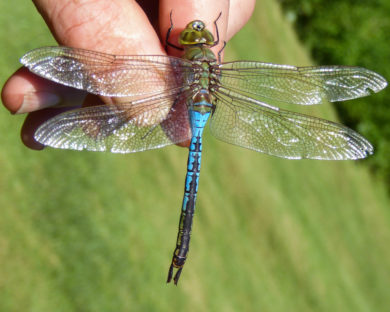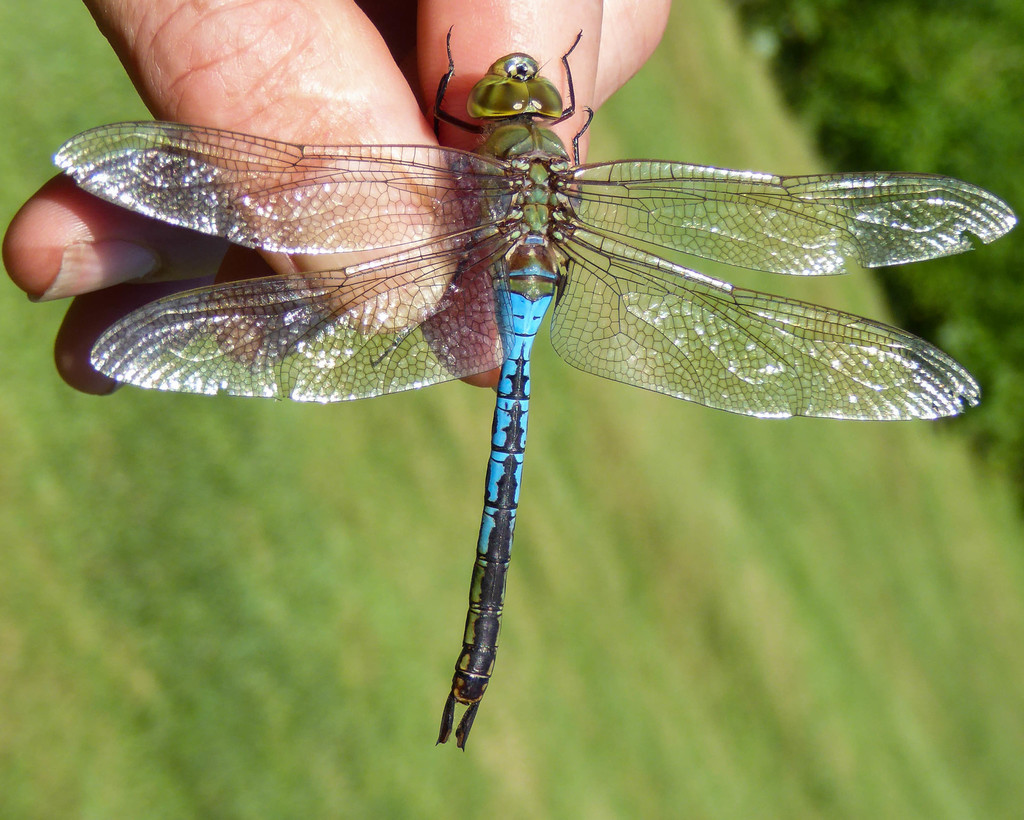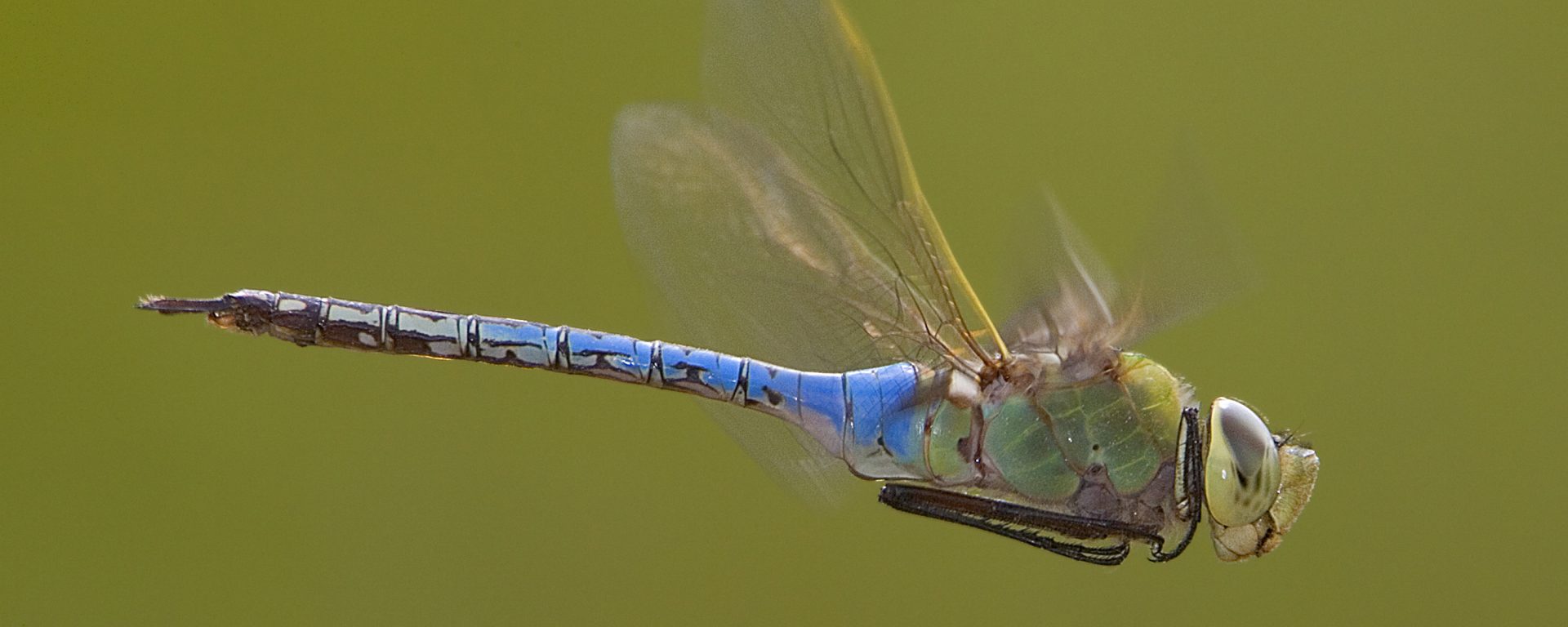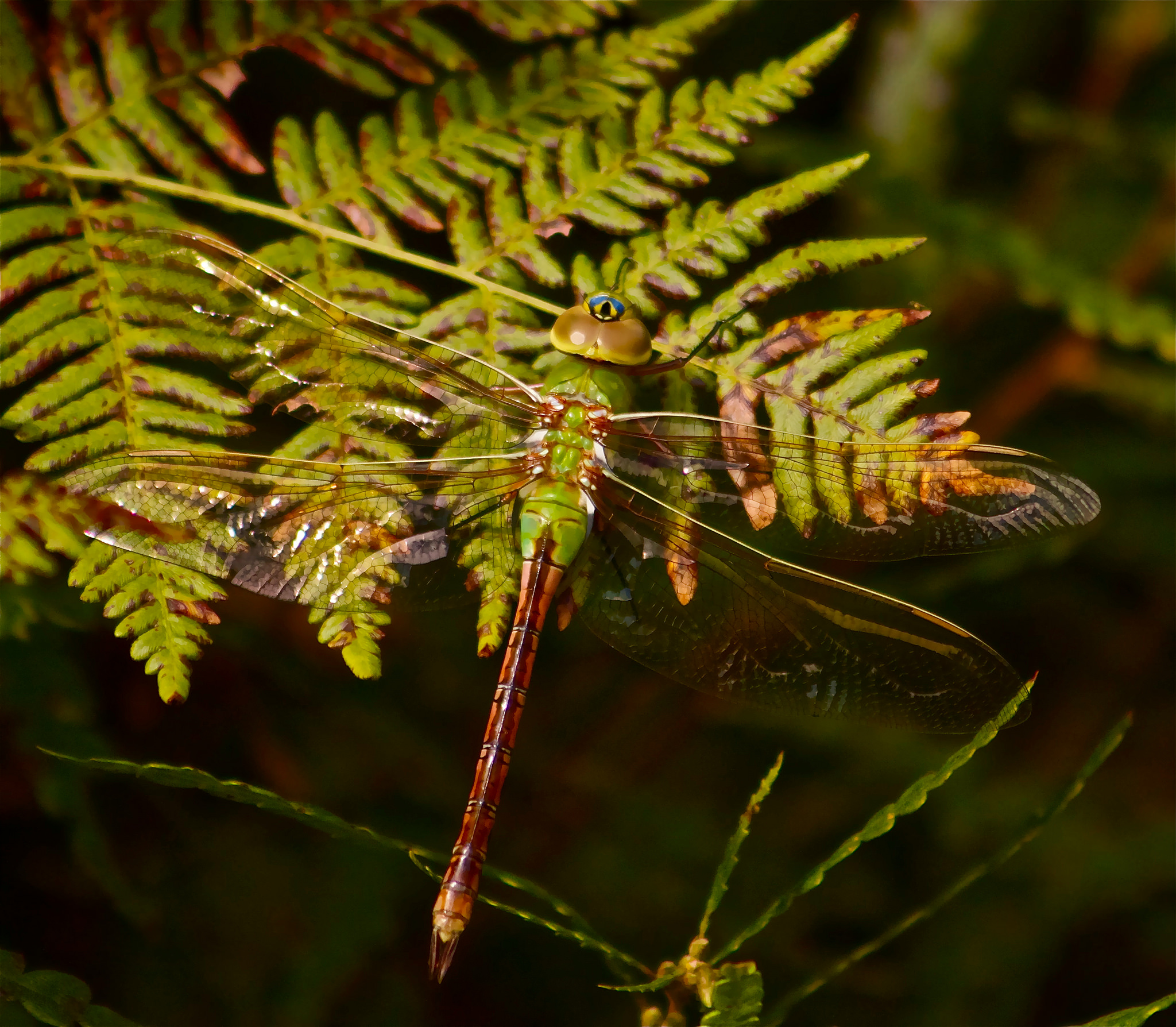Move over Monarchs: VCE and colleagues reveal astonishing dragonfly migration
Norwich, VT — The familiar aerial parade of orange and black Monarch butterflies fluttering southward across North America each fall has drawn attention to the tremendous distances this seemingly fragile species migrates. The migration patterns of other insects, however, remain more mysterious, for both the public and scientists alike. Now, a new paper in Biology Letters describes the full life cycle of a common dragonfly, including an astonishing multi-generational migration of over 600 km (373 miles) on average, with some individuals covering more than 2,500 km (1,553 miles).
Researchers from the Vermont Center for Ecostudies, University of Maryland, and the Smithsonian Conservation Biology Institute explain how the Common Green Darner—a large, abundant dragonfly found across North America—takes three generations to complete its annual cycle. One generation migrates north in spring, the second south in fall, and the third remains resident in the southern part of the species’ range over winter.
Understanding their life cycle is important because of the global context. “There are massive insect declines going on around the world,” says Peter Marra, director of the Smithsonian Migratory Bird Center and second author on the paper, “so understanding these complex biological patterns is essential to determine why different populations might be declining.”
Insects are a critical driver of food webs, so figuring out why their populations are falling dramatically is important for the future success of a wide range of species, from rodents to raptors.
The research team used a combination of data sets, including 21 years of citizen science data, more than 800 dragonfly wing specimens going back 140 years, and specimens caught in the wild. Collaborators Kent McFarland and Sara Zahendra of the Vermont Center for Ecostudies spent nearly two years collecting dragonflies from Florida to Ontario, Canada, and working with museums to get permission to analyze their specimens.
“Despite spanning several countries and having been documented since at least the 1880s, North American dragonfly migration is a poorly understood phenomenon,” stated VCE’s Kent McFarland. He added, “The overarching goal of this study is to understand the geographic scale and connectivity of dragonfly migration. Remarkably, we can do this by examining the chemistry locked in dragonfly wings.”
The team’s analysis included looking at the prevalence of stable hydrogen isotopes in dragonfly wings to infer natal origins. This is possible because the ratio of three forms of hydrogen in the atmosphere shifts with latitude; dragonflies pick up an imprint of the hydrogen ratio at their birthplace, so a scientist can determine where a dragonfly came from by looking at how much of each hydrogen type is present in a tiny piece of the dragonfly’s wing. That information enabled the team to discern the three-generation migration system.
More than two decades of citizen science data—information collected by members of the general public—helped the scientists learn what factors cue dragonflies to migrate or to emerge as flying adults after their aquatic juvenile stage. It turns out temperature plays a big role: the dragonflies both emerge and initiate migration at around 9 degrees Celsius (48 degrees Fahrenheit).
“With climate change we could see dragonflies migrating north earlier and staying later in the fall, which could alter their entire biology and life history,” says Michael Hallworth, postdoctoral fellow at the Smithsonian Migratory Bird Center and first author on the paper. Studds adds, “Climate change is a threat to all kinds of migration systems, and this could be one of them.”
Studds emphasizes that this discovery is the beginning of a long path toward better understanding insect migrations. Revealing the three-generation process, with two migratory generations and one resident, was, in itself, “remarkable,” he says. “How it actually happens is a tremendous new mystery that brings together ecology and evolution,” Studds reflects, “and there’s a lot more to understand.”
— end
Images Available for Use
(Click on image for full resolution)




